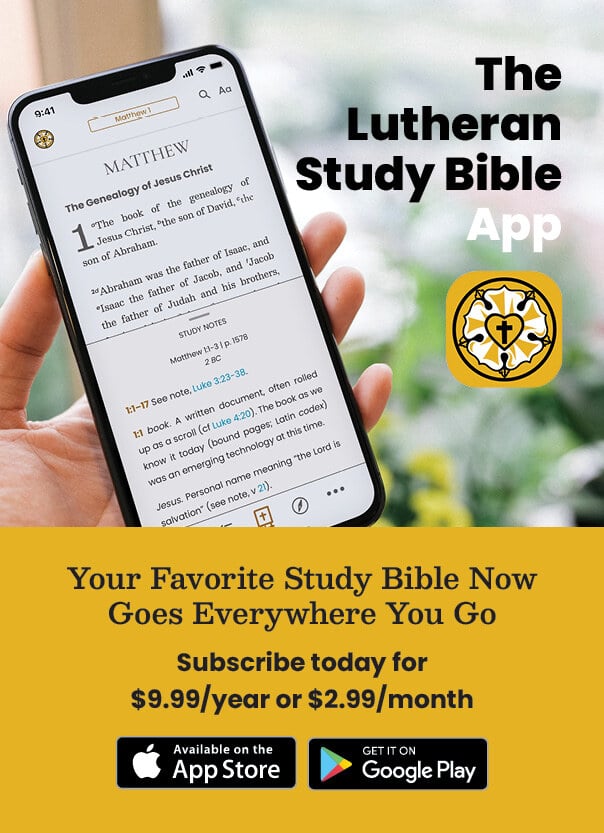Ephesians: An Overview
The mountain chains of western Asia Minor reach for the Aegean Sea. Where the Ayden range points finger-like toward the island of Samos and the Cayster River flows into the Sea, Ionian Greek colonists founded the prosperous port city of Ephesus (near modern Selcuk).
Matthias Flacius and His Contributions to Protestant Teachings
This blog post is adapted from Life Under the Cross: A Biography of the Reformer Matthias Flacius Illyricus.
Galatians: An Overview
The Taurus Mountains of south central Asia Minor form the southern rim of a great basin in which one finds the central Anatolian steppe. Grass, shrubs, and salty lakes fill this dry, lower ground over which enterprising Greeks passed in search of Persian riches to the east. Greek (Hellenistic) settlements grew up at Pisidian Antioch, Iconium, Lystra, and Derbe alongside the Taurus Mountains.
Digging Deeper into Scripture: Luke 3:15–22
I was a kid in the late seventies and the early eighties. At the time, Sears was a popular department store. This long-standing company sold a brand of children’s pants called “Toughskins,” named so for their sturdy fabrication, especially at the knees. Like many kids who wore Toughskins, I did my best to test their durability by falling out of trees and sliding into home base. I consistently wore the knees out. So my Mom would iron patches onto the knees to get a few more months out of them. Despite all the protection Toughskins afforded, I still came home with abrasions—red, tender, and filled with dirt. When my Mom would spray on disinfectant, there was the predictable sting, which I always figured was the chemical killing the germs. She always said it was necessary to apply disinfectant to allow the abrasion to heal properly.
The Gospel Assumed Is the Gospel Denied
This blog is excerpted from an article by Herbet C. Mueller Jr., published in a previous edition of Concordia Pulpit Resources.
2 Corinthians: An Overview
The surpassing value of 2 Corinthians is the opportunity it gives us to view the great care—through both Law and Gospel—that Paul and his colleagues provided to a wayward congregation. We read about the sharpness of his rebuke by which he prodded the congregation toward repentance and the soothing comfort he poured out to them as they welcomed the Lord’s Word.
What the Old Testament Teaches About Vocation
There are plenty of places in the Bible to turn to when you need guidance. While the New Testament is filled with Christ’s parables that offer strong advice, the Old Testament is also brimming with narratives that can help guide you in life. With kings, queens, and workers all throughout these books of the Bible, you can find vocational life advice. Read below to see how with an excerpt adapted from Faith at Work: Christian Vocation in the Professions.
Digging Deeper into Scripture: Luke 7:18–28
Visiting the homebound, the hospitalized, those living in nursing homes, and the imprisoned is a privilege and a joy. Those in such circumstances are welcoming and happy to receive visitors. One of the challenges for them is dealing with isolation. Even with radio, television, and social media, it is easy to become out of touch with what is happening in the world if you can’t be part of it. Such was the case for John the Baptist.
1 Corinthians: An Overview
Waves of the Aegean Sea lap the north shore of the Saronic Gulf in southeastern Greece. From Athens on the east end of the gulf to Cenchreae on the west, the apostle Paul had a 65-mile journey by sea or coastal road, which brought him to the Isthmus of Corinth, that low-lying neck of land that joins Attica (northeast) to the Peloponnese (southwest). High hills and cliffs line the route. But from Cenchreae to Corinth the ground is low enough that ancient merchants could draw their ships overland to the Gulf of Corinth, making that city rich from traders moving east and west. Corinth was a cosmopolitan city that attracted Asians, North Africans, and Westerners to its crowded markets. Along with their trade goods, they supplied a wealth of ideas to the wisdom-hungry Greeks.
Digging Deeper into Scripture: Mark 13:1–13
As I am writing this blog, Christmas is still two months away. However, there are already signs of its coming. Recently, I did some shopping. Halloween has yet to pass and there are already Christmas items on the shelves. I love this time of year, not only because of the weather in Indiana but also because there is a wonderful succession of holidays leading to the celebration of Christmas. These holidays are signs leading to the birth of our Lord. The church has signs of its own. The weeks of Advent bring Scripture readings related to Jesus’ birth, and we light a new candle each week.




















